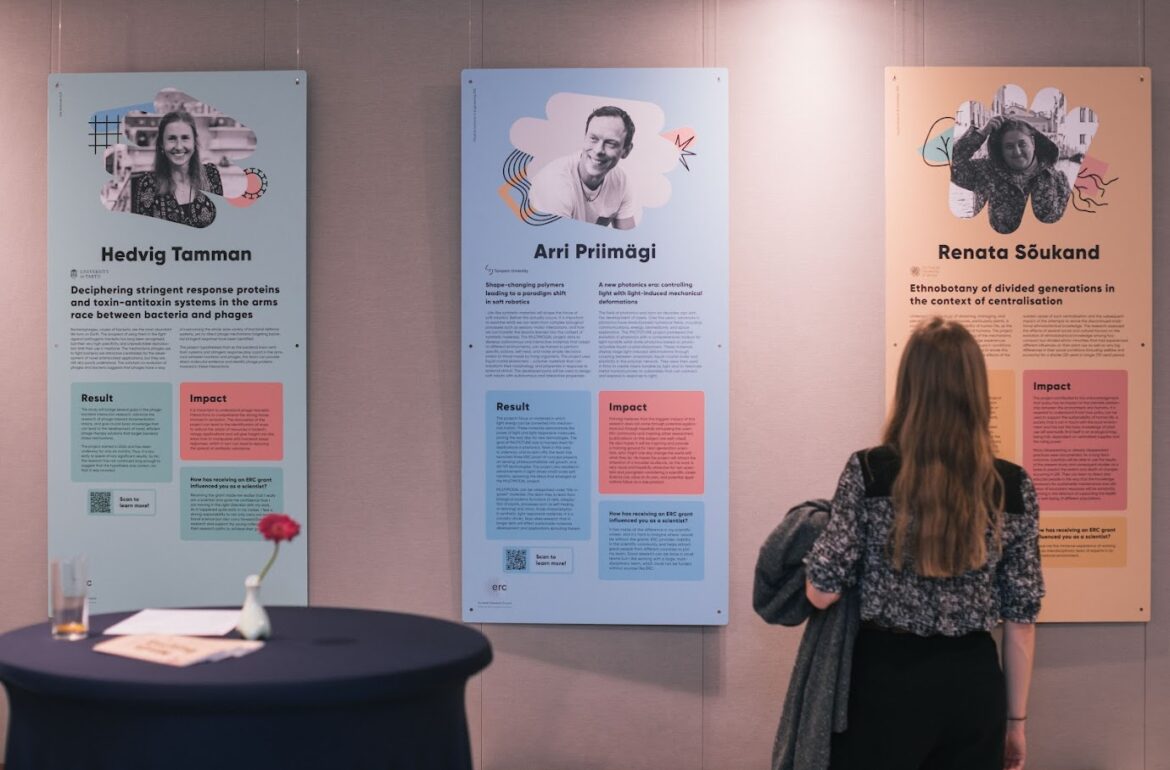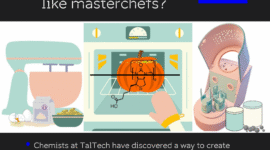On 24 September, the Estonian Research Council celebrated the 12th anniversary of its Brussels office with a high-level seminar and the opening of an exhibition entitled ‘Estonian Research Excellence Showcase: ERC Grants Across the Years’ at the Permanent Representation of Estonia to the European Union.
The exhibition is designed to showcase the high-level research conducted in Estonia, and to shine the spotlight on Estonian researchers or those working in Estonia who have received European Research Council (ERC) grants to carry out their cutting-edge scientific work. These researchers are pioneers in their fields for whom being awarded this grant has been a milestone in their academic careers. The high-level seminar accompanying the exhibition focused on the significance and impact of grants on researchers’ careers, the key challenges in European research and best practice to ensure adequate funding for science and the development of emerging researchers.
The ERC is the European Union’s funding agency for science, supporting frontier research and innovative approaches in new scientific domains. Its mission is to foster high-level research in Europe. In order to achieve this goal, the ERC provides grants which are open to researchers from all disciplines, with scientific excellence as the sole criterion for evaluation.
The event was opened by Carmen Kivistik and Kristel Oitmaa, the representatives of the Estonian Research Council in Brussels, who expressed their gratitude to the speakers and guests in attendance for providing them with an opportunity to introduce the world-class talent of Estonian researchers.
Opening remarks were made by Anu Noorma, the Director General of the Estonian Research Council, who emphasised that Estonia’s researchers exemplify global excellence in their fields, contributing significantly to the global scientific ecosystem, addressing complex challenges and thus helping to make the world a better place for everyone. “The contribution that researchers in Estonia make is not only vital at the local level, but also significant across Europe and in the international scientific arena,” she said.
Noorma added that the exhibition is not merely a static display: it is a dynamic showcase that introduces Estonian researchers and their scientific endeavours while visiting various cities and countries.

H.E. Helen Kaljuläte, the Extraordinary and Plenipotentiary Ambassador of the Republic of Estonia to the Kingdom of Belgium and the Grand Duchy of Luxembourg, said that Estonia is recognised internationally as a country that believes in science, with evidence-based decisions being fundamental to its governance. She stressed that international collaboration is of enormous important to Estonian researchers. “In tackling the intricate global challenges we face today, the transnational dissemination of knowledge and scientific findings is imperative,” she said. “Estonia greatly values the strong partnerships we have established with international colleagues, particularly through organisations such as the ERC, which has played a crucial role in supporting our scientists’ innovation and success on the global stage.”
President of the European Research Council Maria Leptin confirmed in her speech that Estonia not only has the most unicorns per capita, but also stands out for its high-level science, showing that innovation and research alike are strongly established in the country.
During the seminar, a panel took place featuring Leptin alongside distinguished Estonian recipients of ERC grants: Ester Oras, Evelyn Uuemaa and Tambet Teesalu (all University of Tartu), Jaan-Olle Andressoo (University of Helsinki) and Tiina Roose (University of Southampton). The discussion was moderated by Marlon Dumas (University of Tartu), who is also an ERC grant recipient. The panellists shared their unique personal experiences, emphasising the significant impact that the ERC funding has had on their academic careers and research projects.
The fact that 29 Estonian researchers have received the prestigious ERC grant to date is a noteworthy achievement for a country with a relatively small population. Such recognition holds immense significance for the Estonian scientific community – especially due to the nature of the grant, which allows researchers to freely choose what work they conduct, and where and how they conduct it. This provides them with a great deal of freedom.

Marlon Dumas noted that while a substantial number of ERC grant applications are submitted from Estonia each year, only a few are approved, indicating that the full potential of Estonian researchers has yet to be realised. Maria Leptin pointed out that there is no ‘ERC type’ among researchers; rather that they are determined scientists who remain undeterred by negative outcomes and continue to pursue their objectives.
The participants in the panel unanimously agreed that the characteristic persistence of Estonians is a valuable trait in this context. Ester Oras shared her personal experience, noting that she did not succeed in securing a grant on her first attempt either, yet believes that a scientist who recognises the importance of their work must be persistent. She also stressed the critical role of universities in assisting researchers in preparing their applications. Evelyn Uuemaa acknowledged that at one point she considered a career change from science to industry, as she did not see herself as a “typical grant applicant”. She further added that the support of the Estonian Research Council for ERC applicants was crucial in her journey.
Tiina Roose noted that ERC grants serve as a mark of quality: only the best researchers succeed in conditions of intense competition. Securing a grant can also be a turning point in a person’s career; for instance, in the case of Tambet Teesalu, it brought him back to Estonia from the United States. Additionally, receiving a grant often opens doors to new collaborations in the scientific community. However, Jaan-Olle Andressoo said that future efforts should focus even more on knowledge transfer so as to ensure that science and innovation continue to progress hand in hand.
The discussion also highlighted that some of the most innovative ideas often come from young researchers who may lack experience in applying for grants. As such, it is particularly important for universities to assist their researchers in developing the skills needed to secure funding. Moreover, in discussions regarding the fostering of new researchers, it is essential to provide young scientists with a clear career model in order to encourage more of them to choose a scientific career path.
Closing remarks were made by Signe Ratso, the Deputy Director-General of the Directorate-General for Research and Innovation (RTD) at the European Commission, who highlighted that over the past 15 years as many as 14 Nobel Prize laureates have been recipients of ERC grants. Since its establishment, the ERC has aimed to provide researchers with both the freedom and resources to conduct high-level research. “Without a doubt, the ERC will continue to support the best of the best in scientific inquiry,” she said.

PDF VERSION OF THE ONLINE EXHIBITION CAN BE FOUND HERE.
‘Estonian Research Excellence Showcase: ERC Grants Across the Years’ is a travelling exhibition that will move to new locations in the future. It is continually evolving, incorporating new ERC grant recipients and thereby reflecting the dynamic nature of science. The exhibition is currently open at the Permanent Representation of Estonia to the EU (Rue Guimard 11/13, 1040 Brussels). Admission is by advance registration only. To this end, please contact one of the representatives of the Estonian Research Council:
Carmen Kivistik (carmen.kivistik@etag.ee)
Kristel Oitmaa (kristel.oitmaa@etag.ee).
The exhibition is being funded by the European Regional Development Fund via the ‘Support for the Internationalization of R&D: Connecting to the International Knowledge Market’ initiative, which is also known as the Mobilitas 3.0 program.
 Back
Back



